ねねの終焉の地
高台寺を見学する際に、是非立ち寄って見ていただきたい庭があります。塔頭寺院の圓徳院の庭です。ねねの道の反対側にある圓徳院は、伏見城の化粧御殿とその前庭を移築して、ねねが77歳で没するまでの19年間を過ごした終焉の地にあります。
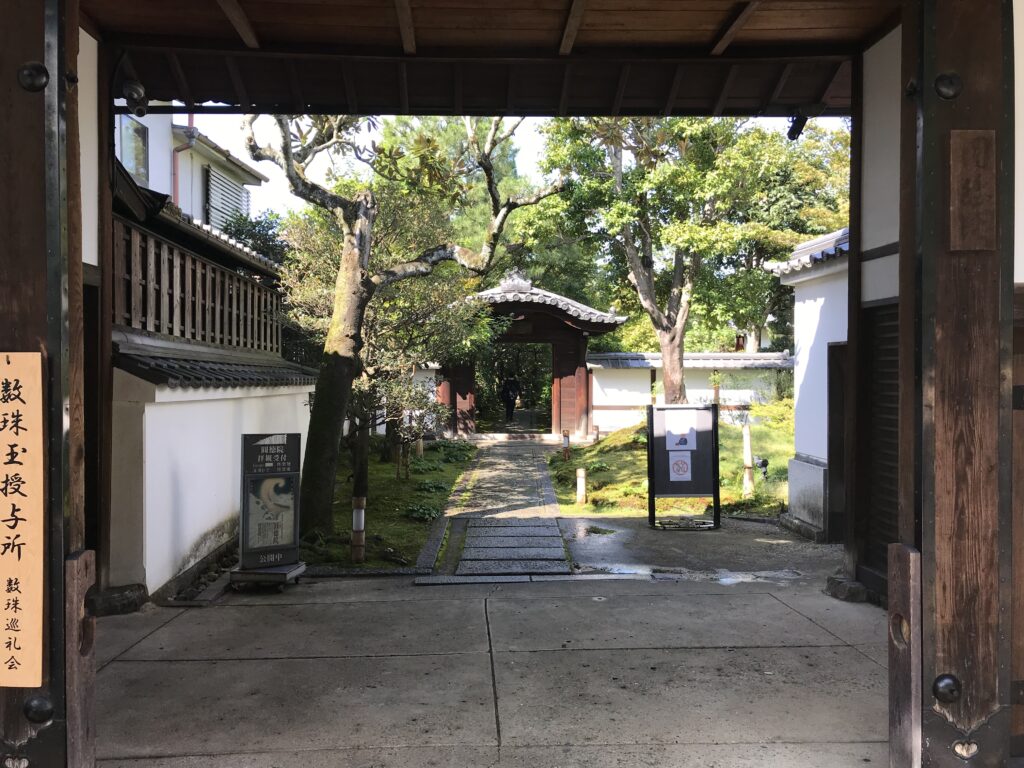
南庭にびっくり!
正門を抜けて方丈から庭を眺めることになります。事前勉強しておいたので、どんな石組が見られるのか楽しみにしていましたところ、えーっ!白砂だけ?と焦りました。何かおかしいと思いながら、受付でいただいたパンフレットをよく見ると、ここは南庭。白砂がメインの庭であることが判明して、一安心。本で読んだのは北庭だと気づき、奥に進みます。
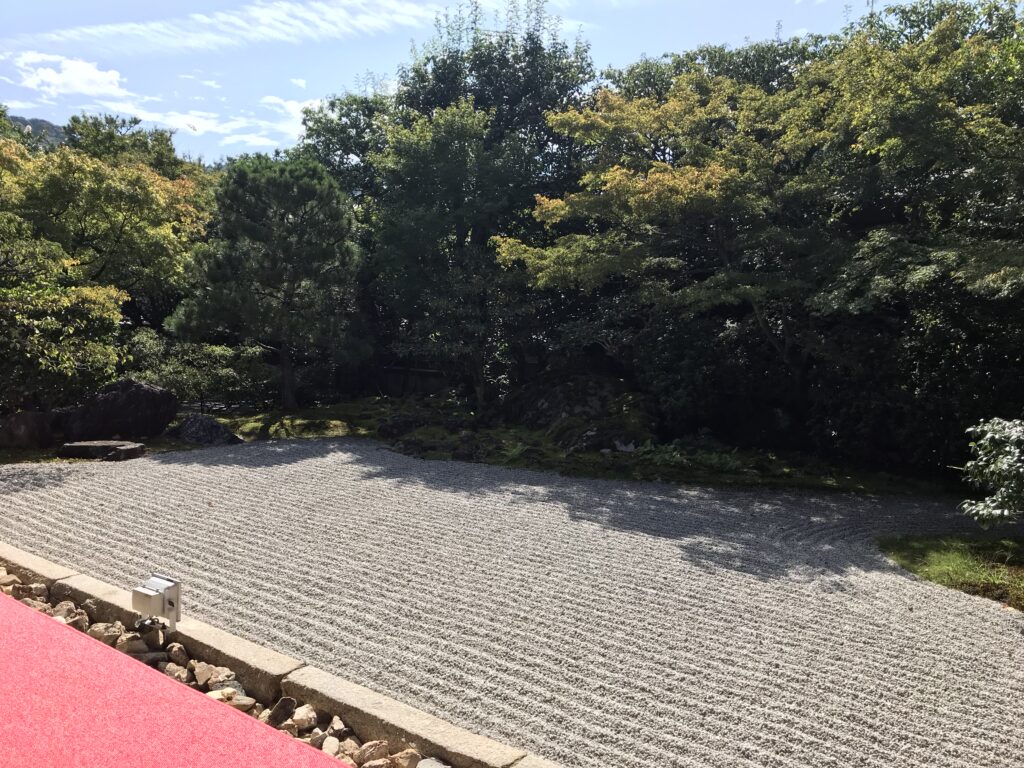
いよいよ北庭へ
いよいよ北庭が望める建物に入ります。オリジナルは伏見城の化粧御殿でしたが、その後の戦火で焼失して建て替わっています。ただし、庭は当時から現存しています。建物に入ると赤い敷物の向こうに北庭が広がります。建物内から見ると額縁効果のおかげで、切り取った庭のカットが更に美しく見えます。
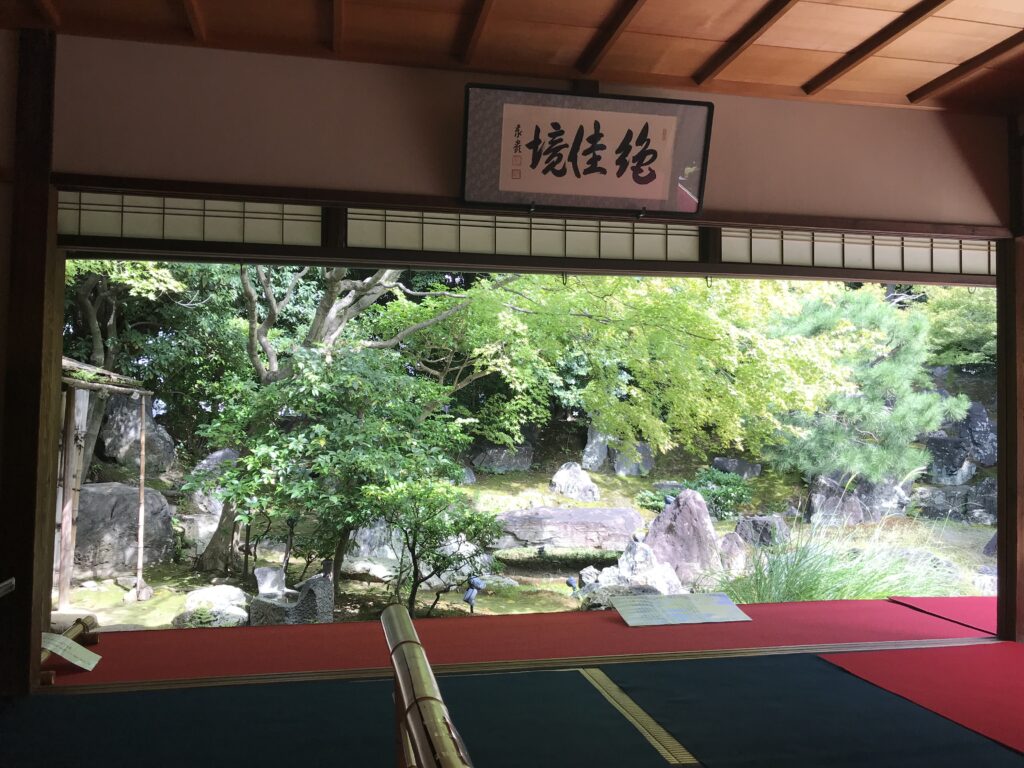
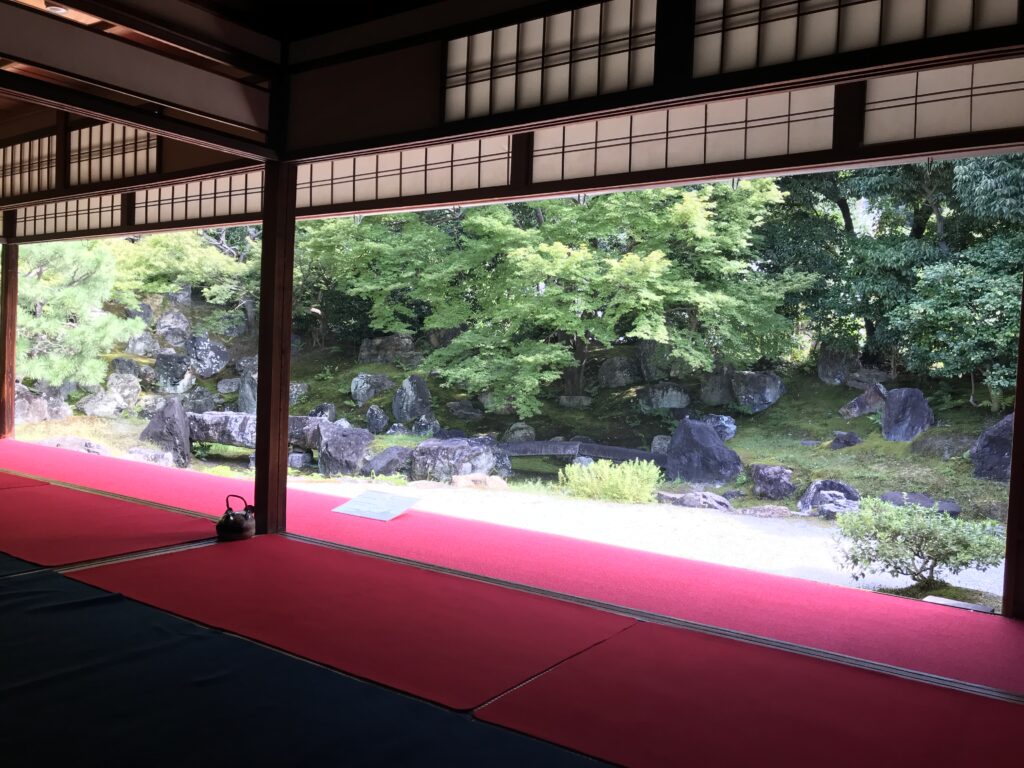
赤い敷物に置いてある説明書きを読むと、石の数は大小合わせて200以上、各地の大名が自分の地処から選りすぐりの天然石を寄進したそうです。作庭は小堀遠州。桃山時代を代表する庭の一つで、国の名勝指定を受けています。伏見城にあったときは、水が張られた池泉回遊式でしたが、移築されてからは枯山水となりました。
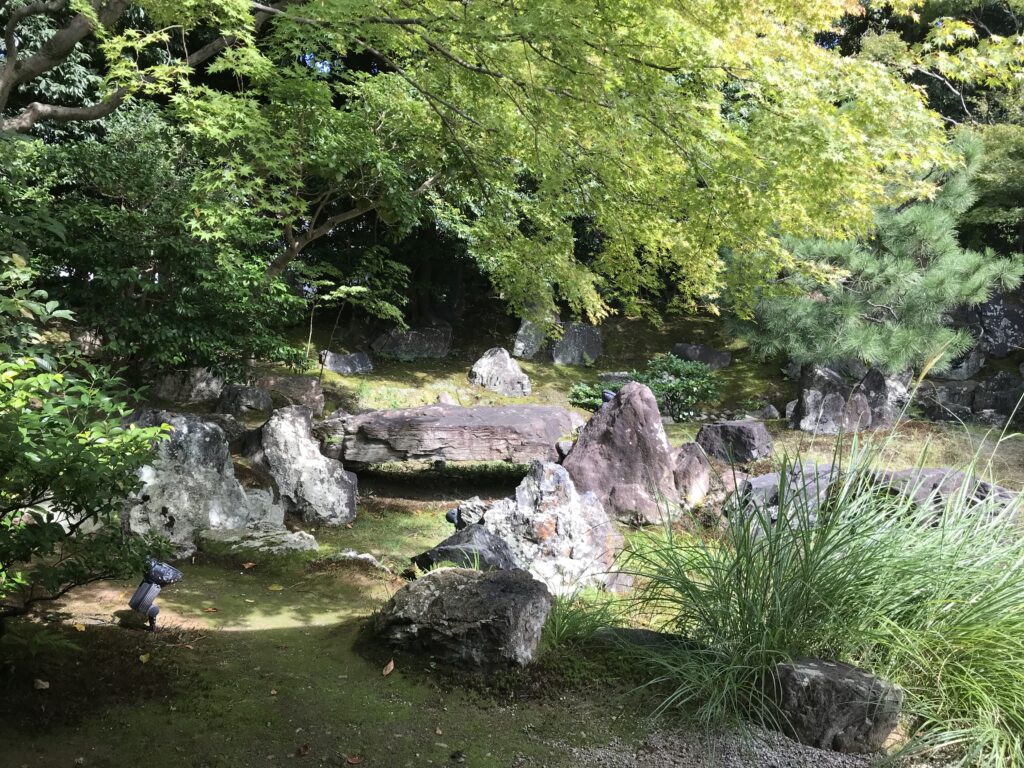
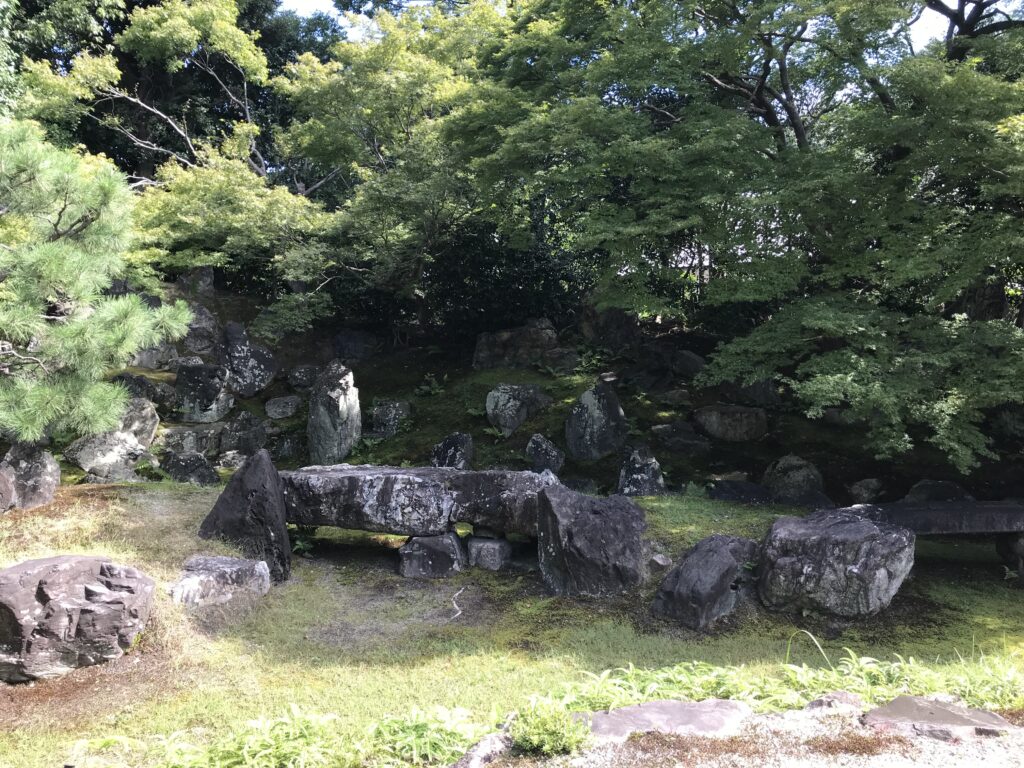
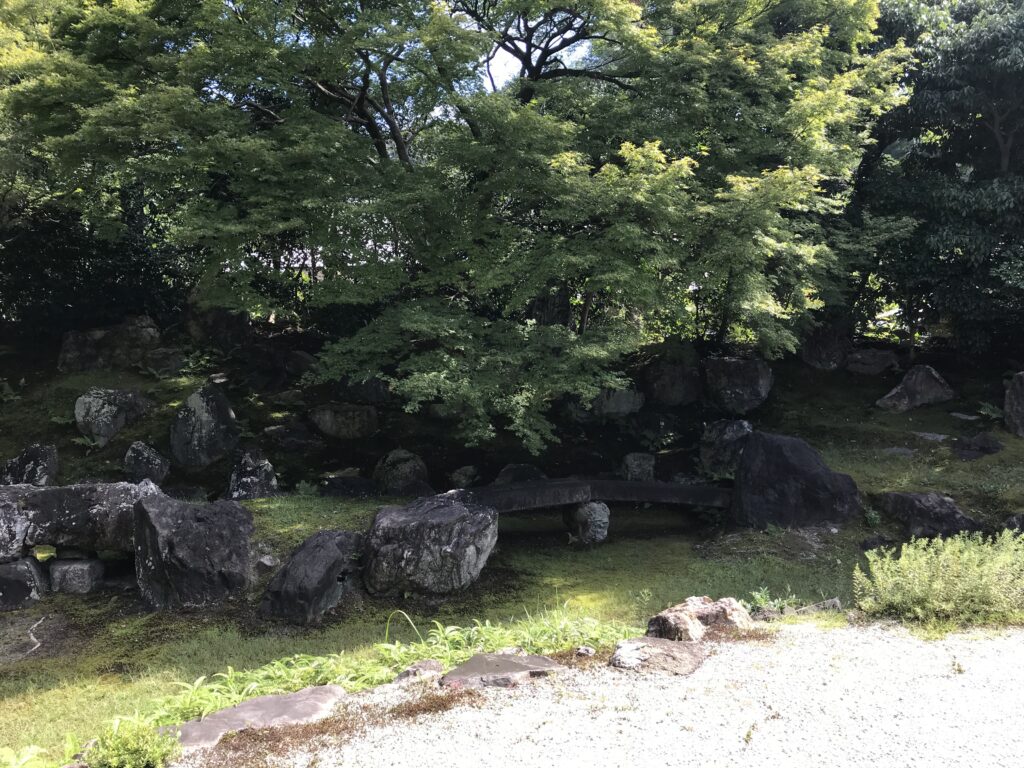
石で、滝組、鶴島と亀島、三尊石を組んでいるそうなのですが、どれがどれか明確には判別できませんでした。ただ、巨石で組んだ橋や、大きな岩がふんだんに使われていて、これぞ豪華かつ豪胆な桃山時代を象徴する庭だと感じました。(完)
圓徳院の御朱印
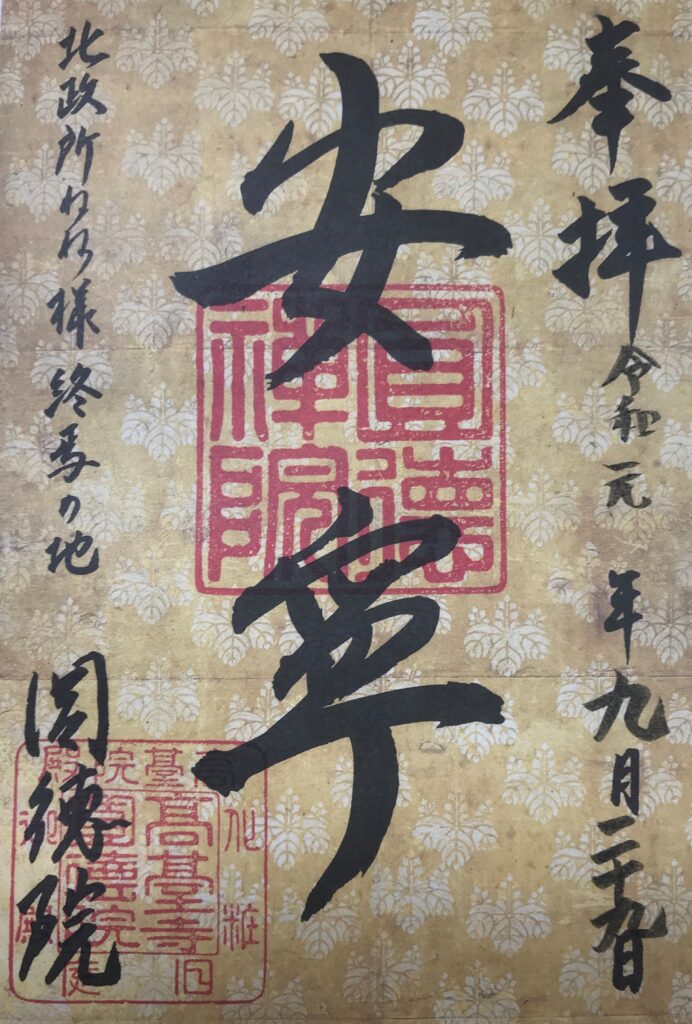
圓徳院が紹介されている書籍
烏賀陽百合さんの「しかけにときめく京都名庭園」に圓徳院が解説されています。
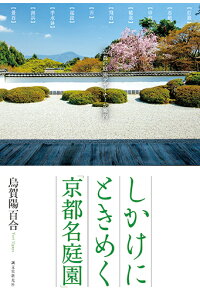
しかけにときめく「京都名庭園」 京都の庭園デザイナーが案内 [ 烏賀陽 百合 ]
価格:1,760円
(2021/5/3 10:53時点)
感想(0件)
Entokuin Temple (English)
The place of Nene’s demise
When you visit Kodaiji Temple, there is a garden that you should definitely stop by to see. It is the garden of Entokuin, a sub-temple. Entokuin, located on the other side of Nene’s path, is a relocated version of the former garden of Fushimi Castle, where Nene spent 19 years until her death at the age of 77.
Surprise in the south garden!
After passing through the main gate, I had a view of the garden from Hojo. I had studied the garden beforehand, so I was looking forward to seeing what kind of masonry I could see. Only white sand? I was a little nervous. Thinking something was wrong, I took a closer look at the pamphlet given to me at the reception desk and found that this was the southern garden. I was relieved to find out that the white sand was the main part of the garden. I realized that it was the north garden that I had read about in the book, and proceeded to the back of the building.
Finally, to the north garden.
Finally, I entered the building overlooking the north garden. The original building was a make-up palace for Fushimi Castle, but it was destroyed by fire in a subsequent war and was rebuilt. However, the garden is still in existence. When you enter the building, the north garden spreads out beyond the red rug. From the inside of the building, the cutout of the garden looks even more beautiful thanks to the framing effect.
According to the explanatory note on the red rug, there are more than 200 large and small stones, and feudal lords from all over the country contributed natural stones selected from their own land. The garden was created by Enshu Kobori. It is one of the most representative gardens of the Momoyama period and has been designated a national place of scenic beauty. When it was in Fushimi Castle, it was a pond garden, but after it was moved, it became a dry landscape garden.
It is said that the waterfall, crane island, turtle island, and three sacred stones are made of stones, but I could not clearly identify which was which. However, I felt that this was a gorgeous and bold garden that symbolized the Momoyama period, with its bridges made of huge stones and the abundant use of large rocks. (End)
Temple Entokuin (Français)
Le lieu de la mort de Nene
Lorsque vous visitez le temple Kodaiji, il y a un jardin que vous devez absolument vous arrêter pour le voir. Il s’agit du jardin d’Entokuin, un sous-temple. Entokuin, situé de l’autre côté du chemin de Nene, est une version relocalisée de l’ancien jardin du château de Fushimi, où Nene a passé 19 ans jusqu’à sa mort à l’âge de 77 ans.
Surprise dans le jardin sud !
Après avoir franchi la porte principale, j’ai eu une vue du jardin depuis Hojo. J’avais étudié le jardin au préalable, j’étais donc impatient de voir quel genre de maçonnerie je pourrais voir. Seulement du sable blanc ? J’étais un peu nerveux. Pensant que quelque chose n’allait pas, j’ai regardé de plus près le dépliant qui m’avait été remis à la réception et j’ai découvert qu’il s’agissait du jardin sud. J’ai été soulagé de découvrir que le sable blanc était la partie principale du jardin. Je me suis rendu compte qu’il s’agissait du jardin nord dont j’avais entendu parler dans le livre, et je me suis dirigé vers l’arrière du bâtiment.
Enfin, au jardin nord.
Enfin, je suis entré dans le bâtiment donnant sur le jardin nord. Le bâtiment d’origine était un palais de maquillage pour le château de Fushimi, mais il a été détruit par un incendie lors d’une guerre ultérieure et a été reconstruit. Cependant, le jardin existe toujours. Lorsque vous entrez dans le bâtiment, le jardin nord s’étend au-delà du tapis rouge. De l’intérieur du bâtiment, la découpe du jardin est encore plus belle grâce à l’effet de cadrage.
Selon la note explicative sur le tapis rouge, il y a plus de 200 pierres, grandes et petites, et les seigneurs féodaux de tout le pays ont apporté des pierres naturelles sélectionnées sur leurs propres terres. Le jardin a été créé par Enshu Kobori. Il est l’un des jardins les plus représentatifs de la période Momoyama et a été désigné lieu national de beauté scénique. Lorsqu’il se trouvait dans le château de Fushimi, c’était un jardin d’étangs, mais après son déplacement, il est devenu un jardin paysager sec.
On dit que la cascade, l’île aux grues, l’île aux tortues et les trois pierres sacrées sont faites de pierres, mais je n’ai pas pu identifier clairement lesquelles. Cependant, j’ai eu le sentiment que c’était un jardin magnifique et audacieux qui symbolisait la période Momoyama, avec ses ponts faits d’énormes pierres et l’utilisation abondante de gros rochers. (Fin)